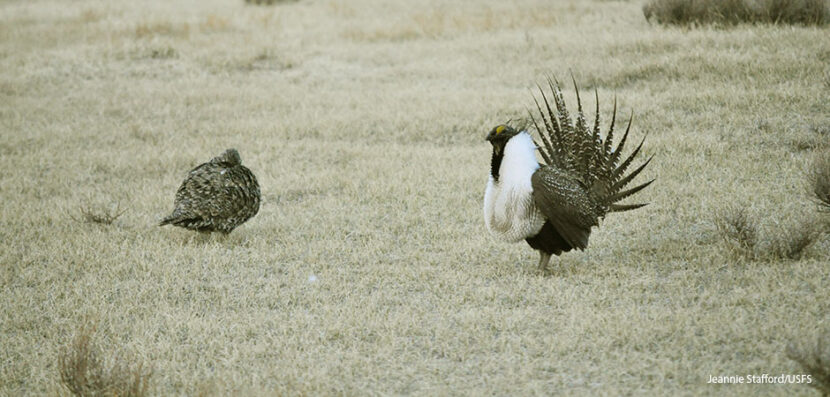
The President vs. the Sage-Grouse
It’s no secret that Donald Trump and environmentalists don’t always get along. But an announcement from the White House earlier this month is likely to drive an even deeper wedge between environmental activists and the current administration. This post looks at the new White House proposal, its possible impact, and why environmentalists are so upset about it.
What’s Happening?
On December 6, the Department of the Interior announced a proposal to open up millions of acres in the Western United States for mining, drilling, and other resource extraction. This has been a consistent theme of the Trump administration: a desire to roll back government restrictions on energy development. The problem is that many of these areas are federally protected under the 2015 Sage-Grouse Conservation Plan. Currently, 11 million acres are protected. Under the new proposal, 80 percent of this protected land would be opened to mining and drilling.
So What Exactly Is A Sage-Grouse?
A sage-grouse is a species of bird with a long-pointed tail and feathered legs. Males weigh between 4 to 7 pounds, while females are slightly smaller. They graze along the ground and can’t digest hard seeds the way other species of grouse can. They are also known for their elaborate courtship rituals, in which the males strut around in circles to attract mates. Their range used to span 16 U.S. states–from California, Arizona, and New Mexico in the south through the Rocky Mountain region, and up to the Canadian border. However, in recent years this has greatly declined.
Why Is This New Proposal Harmful?
If you’re familiar with the western United States, you may have seen the so-called “sagebrush sea”–the wide expanse of sagebrush and open space that covers tens of millions of acres and is home to about 350 plant and animal species, including the sage-grouse. Scientists say that the sage-grouse’s numbers, which were once nearly 16 million, have already plummeted by about 95 percent. Opening up this Western land to drilling and mining will further devastate these habitats and threaten the survival of the sage-grouse and many other species. Furthermore, experts argue that the land being opened isn’t even prime land for resource extraction.
What Can Be Done?
Nonprofit groups–such as The Wilderness Society, The Nature Conservancy, and others–are working hard to raise funds to continue fighting for the protection of these lands. In fact, back in April, Montana conservationists filed a lawsuit against the Secretary of the Interior, Ryan Zinke, and the Bureau of Land Management for leasing protected lands to energy companies. According to environmentalists, the protection of sage-grouse habitats has become one of the largest conservation efforts in American history. The initial 2015 protection plan involved the combined work of the U.S. Forest Service, Western governors, and legislators, sportsmen, conservationists, ranchers, and representatives of the oil and gas industries. However, President Trump began chipping away at these protections soon after taking office in 2017.


